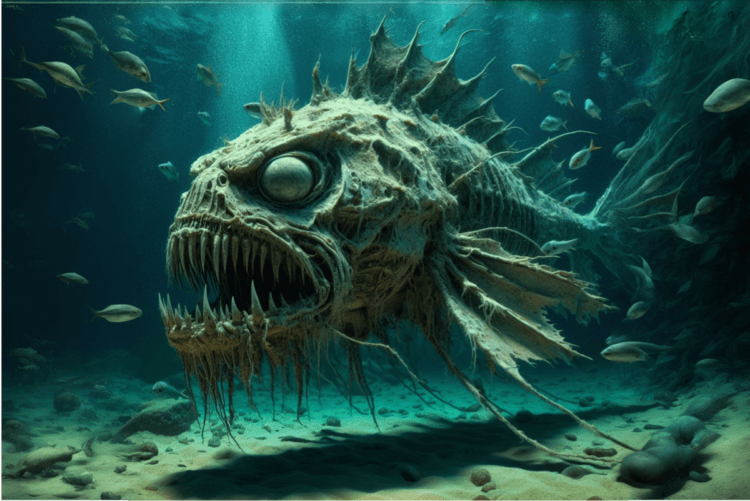The ocean continues to be one of the most poorly understood spaces on our planet. In its depths live many creatures that are unknown to science. Nevertheless, researchers periodically manage to discover new species. A striking example of this is deep-sea fish, which live at a depth of several hundred meters, and never float to the surface, since they immediately die at shallow depths. Previously, we talked about several unknown species of deep-sea sharks discovered over the past few years off the coast of Australia. With this, scientists caught a previously unknown deep-sea ghost shark, which has a rather unusual appearance, off the coast of Thailand. The fish was named Chimaera supapae.

Most deep-sea fish look really scary
Sharks- ghosts – ancient deep-sea fish
Ghost sharks, also known as ratfish, belong to a group of fish known as chimeras. They usually live at depths of 500 meters or more. In fact, they are not sharks, but only distant relatives of the sharks and rays known to us. Scientists from the National Marine Wildlife Foundation report that these cartilaginous fish diverged about 400 million years ago, long before fish came ashore. This makes chimeras evolutionarily one of the oldest fish, but it is possible that they have evolved and differed from their ancestors. As we recently told you, there are not many living fossils, but they are still found.
Characteristic features of these fish are large, shiny eyes and pointed bodies that resemble rats. Hence their name – rat fish. Some species grow to impressive sizes – their body length is about two meters.

A ghost shark discovered off the coast of Thailand. Photo source: iflscience.com
Chimeras inhabit continental slopes and ocean ridges, where they feed on bottom creatures – mollusks, crustaceans, etc. Until recently, scientists knew only 53 species of chimeras. Now, thanks to a recent study published in the Raffles Bulletin of Zoology, there are 54 species. There may be even more of them, but due to the nature of their habitat, new species are difficult to detect.
New species of ghost shark
Ghost sharks are extremely rare off the coast of Thailand. A single specimen was discovered in 2018 at a depth of 772–775 meters in the Andaman Sea. Initially, scientists assumed that the fish belonged to the species Chimaera aff. macrospina. However, subsequently, genetic studies and morphological analysis showed that the discovered fish is a new species.
By the way, the name of the new species, that is, Chimaera supaae, was given in honor of Professor Supap Monkolprasit, a scientist who devoted her entire life to studying cartilaginous fish in Thailand and died in 2013.

The length of the discovered specimen of Chimaera supapae is 50 cm. Photo source: livescience.com
The peculiarity of Chimaera supapae is its unusual appearance, which distinguishes it from other species. These include a large head, but a short muzzle, as well as large oval eyes. As reported in the study, the head takes up almost a third of the fish's total length. The eyes have an iridescent green color. The body of the fish is dark brown and has no stripes or spots.
Another feature of Chimaera supapae is its wide pectoral fins. According to the researchers, such fins may be related to the fish's ability to maneuver along rocky bottoms with high relief.

Another representative of deep-sea creatures — devil fish Photo source: ecoportal.su
The fish looks really scary, and resembles some kind of ancient creature rather than the shark we are used to. However, this is a characteristic feature of all deep-sea fish. For example, the demon shark that we talked about earlier has an even more unusual appearance.
Follow the link to our ZEN CHANNEL. We have prepared for you a lot of interesting, exciting materials dedicated to science.
As the researchers report, the discovered specimen is an immature male, 50 centimeters long. Therefore, it can be assumed that the fish can grow to larger sizes. It is yet another reminder that science knows very little about the marine environment, and much remains to be learned. Some areas of the ocean, for example, near Antarctica, have practically not been studied at all. Earlier we told you that scientists managed to catch a sea spider here. You can learn more about this creature by following the link.